Runterscrollen für Deutsch / Scroll down for German
What is your preferred way for stranded knitting? One color in each hand? Both in the left? Both in the right? Over the same finger? Over different fingers? Or do you have a knitting thimble?
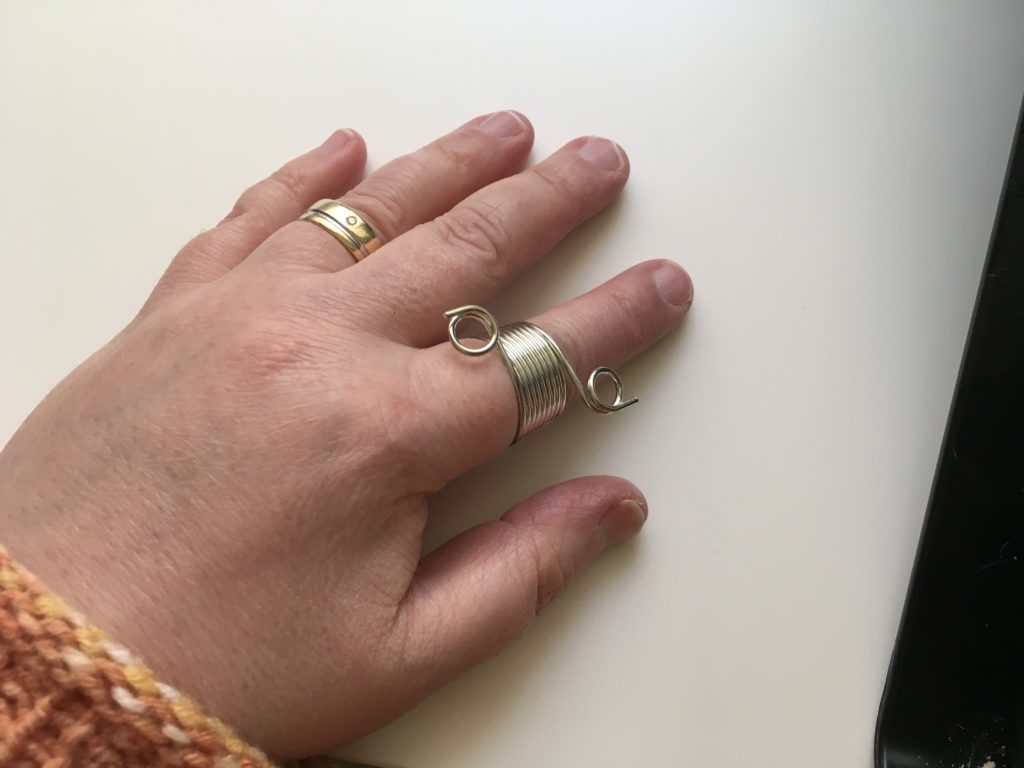
Knitting thimble for stranded knitting
No matter which is your preferred way, unless you’re Arne and Carlos your tension is probably not perfect. Mine sure isn’t. And as much as I love everything Norwegian, the way Arne and Carlos achieve their perfect tension looks kind of tedious to me. So I’d prefer to stick with my method of having one color in each hand and live with my tension not being perfect. This leads us to the topic of the blog post – color dominance in stranded knitting. Take a look at these hats I’ve knit:
In both hats, the bottom row of hearts is unobtrusive, it recedes into the background. The top row of hearts pops much more. So how did they get this way? For the bottom row I used the background color as my dominant color, for the top row I used the contrast color as my dominant color. Let’s take a look at the inside of the hats so you can see what is going on.
See the noticeable floats from the contrast color on the red? They are big and on top of the background color floats. They are bigger, so they have more yarn. So the stitches also have more yarn. And a stitch with more yarn is bigger. Ta-dah, we have a dominant color.
When working with two strands of yarn, one strand goes below the other. This strand has to travel a little bit farther from stitch to stitch so it takes up more yarn and becomes your dominant color.
The general rule of thumb is that the strand that is the farthest to the left becomes dominant. But don’t rely on that – for me it’s the other way round. The yarn in my right hand is dominant.
Here’s the hat again with the contrast color as the dominant color throughout.
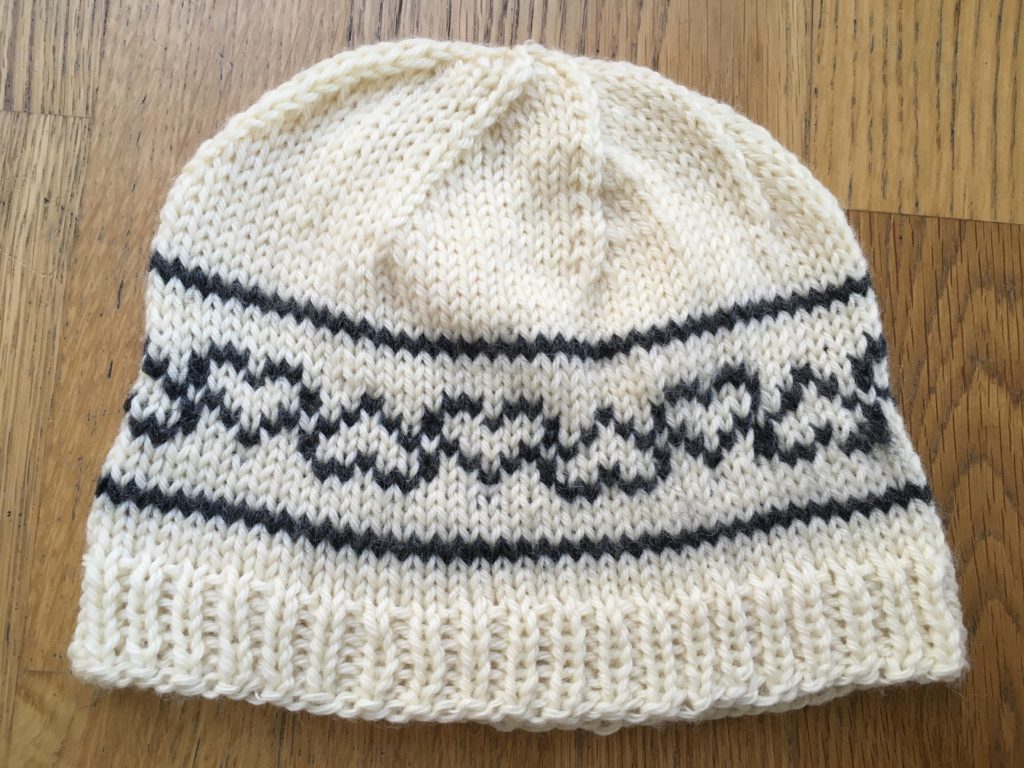
So, what should you take away from this blog post?
- Unless your tension is perfect, one color is dominant – it will “pop” more – than the other.
- Make a swatch to see which of your yarns is dominant.
- Choose the look your prefer.
- Stay consistent within a project. When you start by holding your contrast color to the left and the background color to the right, keep with that. If you are like me and tend to forget about your projects as soon as something new and shiny comes along, make a note somewhere.
- If you like the hats I’ve made, the pattern will be available next week and it will be FREE for my newsletter subscribers! So sign up for my newsletter before February 12th, 2020 and you will receive the pattern in your inbox!
Farbdominanz beim Jacquardstricken
Was ist Deine liebste Methode für Jacquardstricken? Eine Farbe in jeder Hand? Beide links? Beide rechts? Beide über den gleichen Finger? Jede über einen anderen Finger? Vielleicht hast Du auch einen Strickfingerhut?

Was auch immer Deine bevorzugte Methode ist – wenn Du nicht gerade Arne und Carlos bist, ist Deine Fadenspannung vermutlich nicht perfekt. Meine ist es definitiv nicht. Und so sehr ich auch alles Norwegische liebe, die Art und Weise, wie Arne und Carlos ihre perfekte Fadenspannung erreichen, sieht für mich ziemlich mühsam aus. Deshalb bleibe ich bei meiner bevorzugten Methode – ein Faden in jeder Hand – und lebe mit meiner nicht perfekten Fadenspannung. Das führt uns zum Thema dieses Blogposts – Fadendominanz beim Jacquardstricken. Schau diese beiden Mützen an, die ich gestrickt habe:
In beiden Mützen ist die untere Reihe Herzen unauffällig, sie verschwindet fast im Hintergrund. Die obere Reihe sticht viel mehr hervor. Wie sind die Mützen so geworden? Für die untere Reihe habe ich die Hintergrundfarbe als meine dominante Farbe benutzt, für die obere Reihe ist die Kontrastfarbe meine dominante Farbe. Was heisst das nun genau?
Siehst Du, wie auffällig in der oberen Reihe die Spannfäden sind? Sie sind gross und liegen über den Spannfäden der Hintergrundfarbe. Sie sind grösser, also bestehen sie aus mehr Garn. Die Maschen haben also auch etwas mehr Gran. Und eine Masche aus mehr Garn ist grösser. Tada, wir haben eine dominante Farbe.
Wenn mit zwei Fäden gearbeitet wird, liegt einer der Fäden auf der Rückseite unter dem anderen. Dieser untere Faden legt einen etwas weiteren Weg zurück von Masche zu Masche, verbraucht deshalb etwas mehr Garn und wird die dominante Farbe.
Die Faustregel ist, dass der Faden, der am weitesten links gehalten wird, der dominante ist. Verlass Dich aber nicht darauf – bei mir ist es genau umgekehrt. Der Faden in meiner rechten Hand ist dominant.
Hier ist die Mütze nochmal mit der Kontrastfarbe als dominanter Farbe.

Was solltest Du also aus diesem Blogpost mitnehmen?
- Wenn Deine Fadenspannung nicht absolut perfekt ist, ist eine Farbe dominant. Sie ist auffälliger als die andere.
- Mach eine Maschenprobe um zu sehen, welche Deiner Farben dominant ist.
- Entscheide Dich, welcher Look Dir besser gefällt.
- Bleib innerhalb eines Projektes konsistent. Wenn Du am Anfang die Kontrastfarbe links und die Hintergrundfarbe rechts gehalten hast, bleib dabei. Wenn Du so bist wie ich und ständig durch neue, tolle Projekte abgelenkt wirst, mach Dir eine Notiz.
- Wenn Dir die Mütze gefällt: Die Anleitung wird nächste Woche veröffentlicht und für Abonnenten meines Newsletters ist sie KOSTENLOS! Also registrier Dich vor dem 12.2.2020 und Du wirst die Anleitung nächste Woche in deinem Emailpostfach haben!

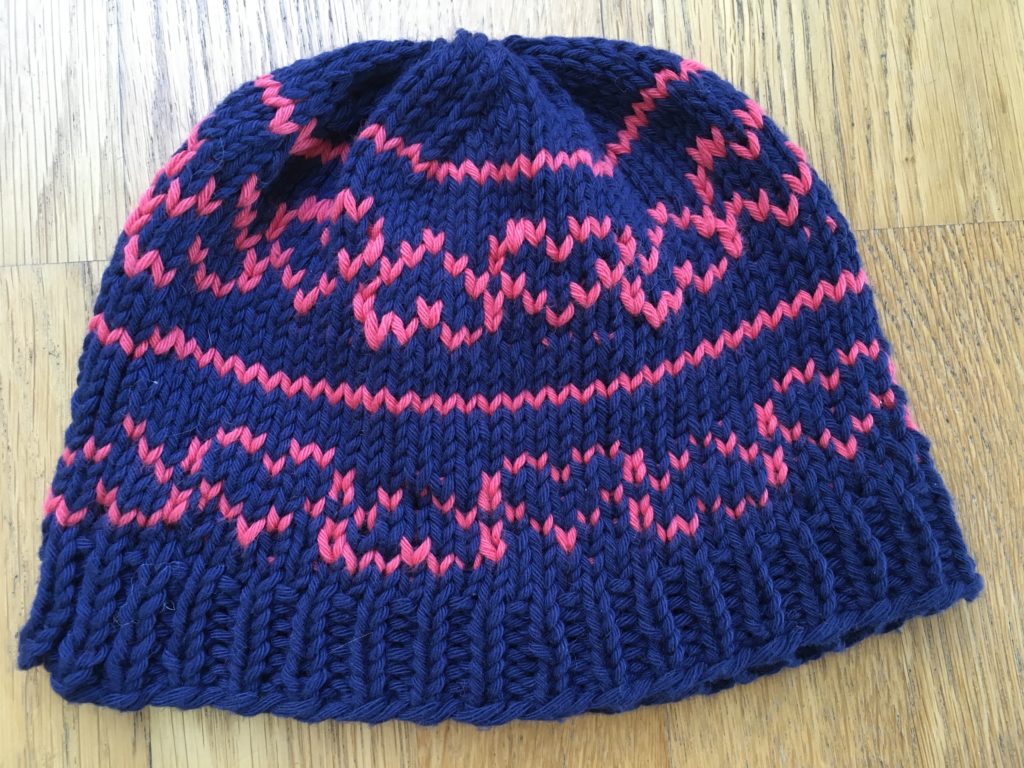
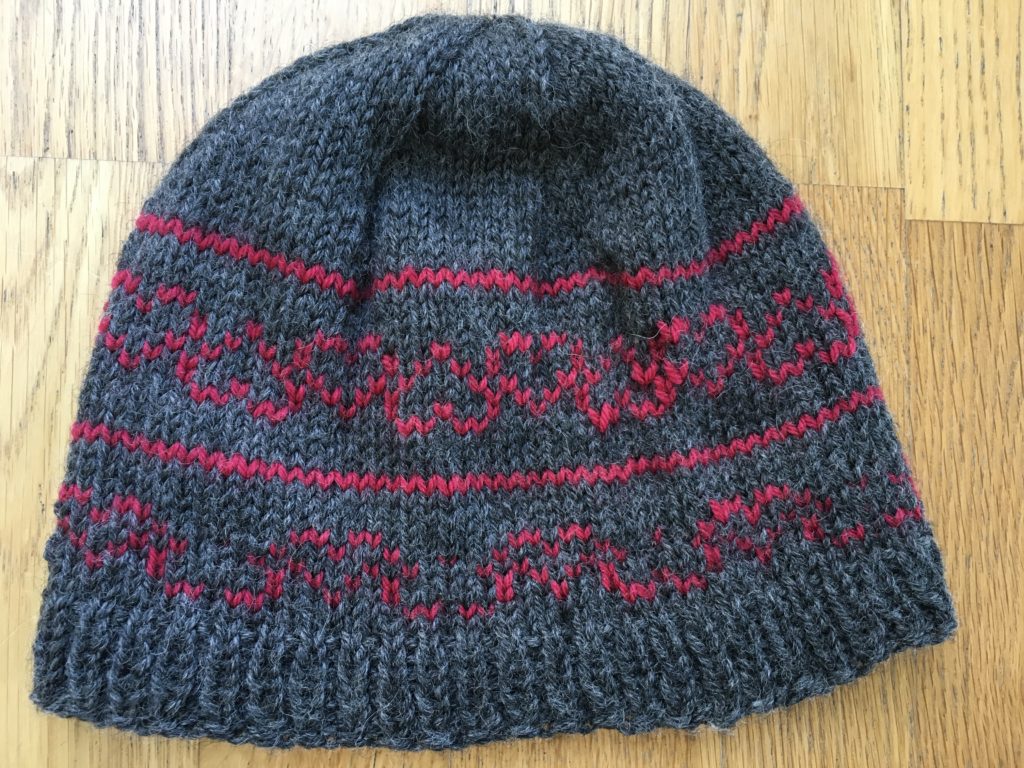
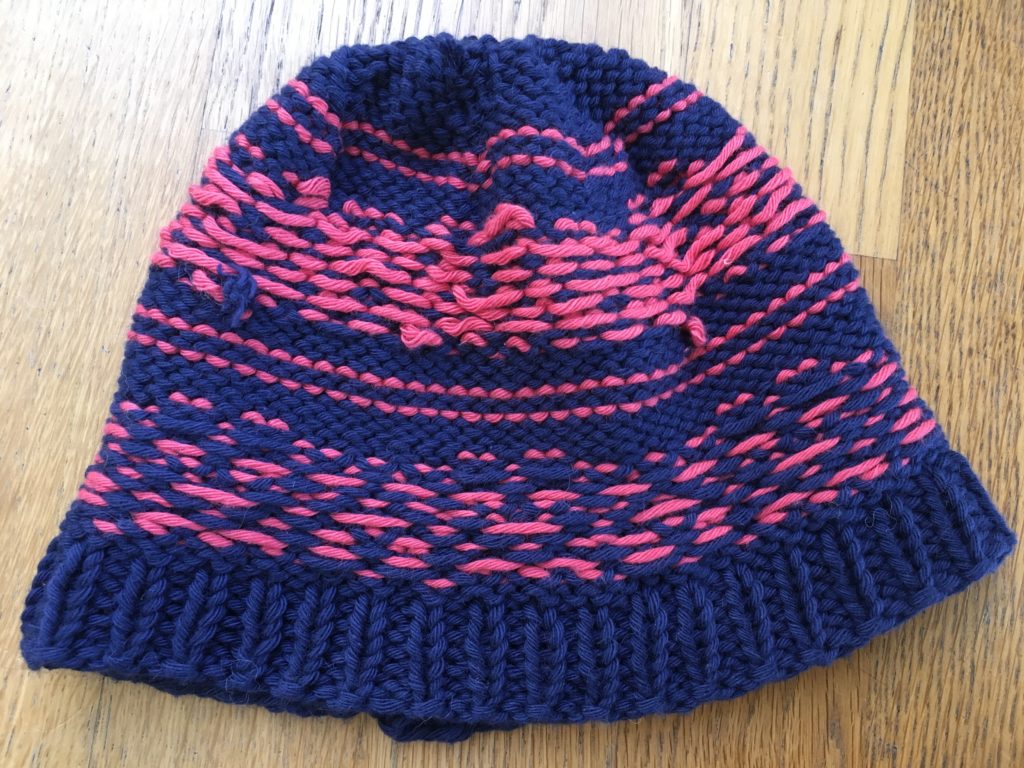
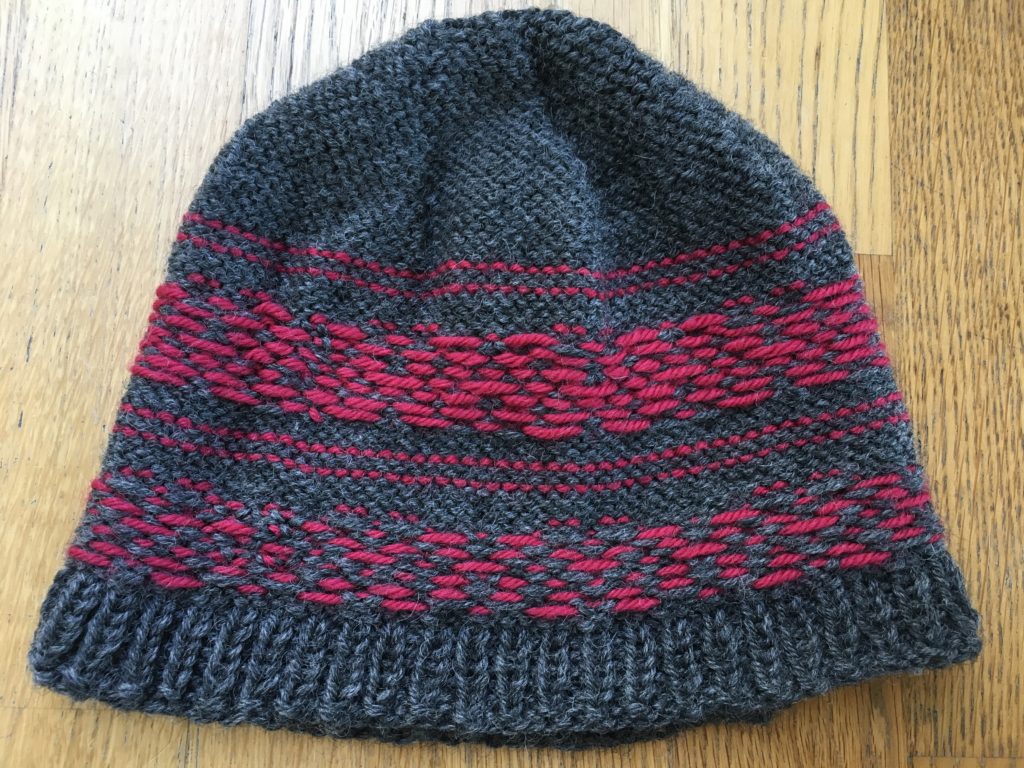
Pingback: Little Black Heart – Knitted in Switzerland